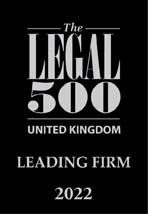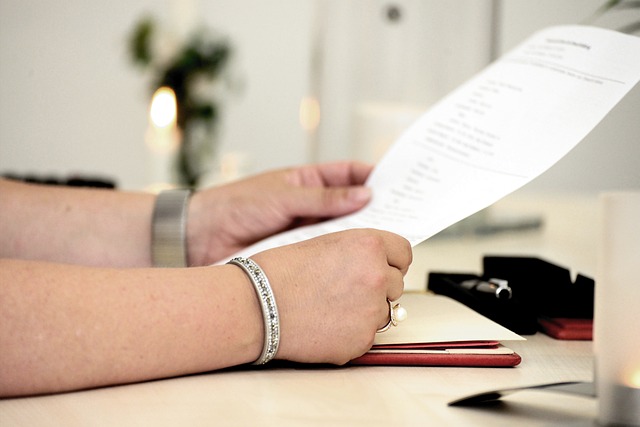A vulnerable person trust, often referred to as a disabled person’s trust, is a legal arrangement designed to protect the assets of individuals who are unable to manage their finances due to physical or mental disabilities. These trusts provide financial security for vulnerable individuals, ensuring that their care and living expenses are met while safeguarding their eligibility for means-tested benefits.
At Blackstone Solicitors, we regularly guide families across England and Wales through the process of setting up a vulnerable person trust. One of the most common questions we receive is, “What documents are required to set up a vulnerable person trust?” This article will outline the key documents needed, explain their importance, and offer insight into why working with a solicitor is essential for ensuring everything is done correctly.
Please click here to find out more about our Private Client services
Free Initial Telephone Discussion
For a free initial discussion with a member of our New Enquiries Team, get in touch with us today. We are experienced in dealing with all the legal aspects of vulnerable person trusts and once instructed, we will review your situation and discuss the options open to you in a clear and approachable manner. Early expert legal assistance can help ensure you are on the best possible footing from the start and also avoid the stress of dealing with these issues on your own. Simply call us on 0345 901 0445 or click here to make a free enquiry and a member of the team will get back to you.
Why Set Up a Vulnerable Person Trust?
Before delving into the required documents, it’s important to understand why families opt to set up a vulnerable person trust. The primary reasons include:
- Financial protection: To ensure that assets such as savings, investments, or property are managed responsibly on behalf of the vulnerable person.
- Eligibility for benefits: To ensure that the vulnerable person continues to qualify for means-tested benefits such as Universal Credit, Housing Benefit, or Personal Independence Payment (PIP).
- Control of assets: To provide peace of mind that funds are used appropriately for the care and well-being of the vulnerable individual.
With these goals in mind, it is crucial to gather the correct documentation when setting up a trust.
Key Documents Required to Set Up a Vulnerable Person Trust
- The Trust Deed
The trust deed is the most critical document in the creation of a vulnerable person trust. It serves as the foundation of the trust and lays out all of the key terms, roles, and responsibilities involved in managing the trust’s assets. Drafting a comprehensive and legally sound trust deed is essential for ensuring the trust functions correctly and protects the vulnerable person’s interests.
The trust deed should include the following information:
- The Settlor: The person who establishes the trust and transfers assets into it (often a parent or guardian).
- The Trustees: The individuals or professionals responsible for managing the trust and its assets on behalf of the vulnerable person.
- The Beneficiary: The vulnerable individual for whom the trust is created.
- The Purpose of the Trust: A clear statement about why the trust is being created, such as to provide for the care and financial security of a vulnerable person.
- Instructions for Asset Management: How the assets in the trust should be managed, including investment strategies and how funds should be used to support the beneficiary.
- Provisions for Replacing Trustees: A plan for what happens if a trustee is unable to continue in their role.
A well-drafted trust deed is crucial for preventing disputes, ensuring smooth administration, and avoiding unintended legal consequences. At Blackstone Solicitors, we provide expert guidance in drafting trust deeds that comply with all legal requirements.
- Trustee Declaration
Once trustees are appointed, they must sign a trustee declaration. This document confirms their acceptance of the role and outlines their responsibilities in managing the trust in line with the trust deed. Trustees have a legal duty to act in the best interests of the vulnerable person, and the trustee declaration ensures that each trustee understands and agrees to these obligations.
Key elements of the trustee declaration include:
- Acknowledgement that the trustees must act impartially and in the best interests of the beneficiary.
- Confirmation that the trustees will manage the trust’s assets in accordance with the terms set out in the trust deed.
- A declaration of the duty to maintain accurate financial records and ensure compliance with tax laws.
By signing this declaration, trustees agree to carry out their role with due diligence, protecting the vulnerable person’s assets and ensuring that funds are used appropriately.
- Identification Documents for the Settlor, Trustees, and Beneficiary
To comply with legal and regulatory requirements, you will need to provide identification documents for all parties involved in the trust, including the settlor, trustees, and the beneficiary. This is required as part of the Know Your Client (KYC) process, which helps to prevent fraud, money laundering, and financial crime.
Identification documents typically include:
- Proof of identity: A valid passport or driving licence for each party.
- Proof of address: Recent utility bills, bank statements, or council tax letters for each party.
These documents ensure that the individuals involved in the trust are properly verified and that the trust complies with anti-money laundering regulations.
- Medical or Disability Evidence for the Beneficiary
To establish the beneficiary’s eligibility for a vulnerable person trust, it may be necessary to provide evidence of their disability or medical condition. This evidence can help ensure the trust qualifies for certain tax reliefs and confirms that the individual meets the legal definition of a vulnerable person.
Acceptable evidence can include:
- Medical reports or letters from healthcare professionals detailing the nature of the disability or condition.
- Proof that the beneficiary receives government benefits related to disability, such as Personal Independence Payment (PIP), Disability Living Allowance (DLA), or Attendance Allowance.
Providing this evidence is essential to ensure that the trust qualifies as a vulnerable person’s trust under UK law and receives the appropriate tax treatment.
- List of Assets to Be Transferred into the Trust
A vulnerable person trust must be funded with assets to serve its purpose. This requires a clear and detailed list of all assets that will be transferred into the trust. These assets could include:
- Cash or savings: Bank accounts, savings accounts, or ISAs that will be held by the trust.
- Investments: Stocks, bonds, or investment portfolios intended for the trust.
- Property: Real estate, such as a family home or rental property, that will be owned by the trust for the benefit of the vulnerable person.
- Other assets: Valuable personal items, insurance policies, or other resources.
Providing an accurate list of assets is crucial for determining the trust’s financial position and ensuring that trustees manage the assets in accordance with the trust deed. Transferring assets into the trust involves legal paperwork to ensure proper ownership is established under the trust.
- Tax Registration Documents
If the trust is likely to generate income or capital gains, it will need to be registered with HM Revenue & Customs (HMRC) for tax purposes. This includes obtaining a taxpayer reference number and filing tax returns where necessary. Vulnerable person trusts benefit from special tax treatment, including reduced income tax rates and capital gains tax relief, but the trust must be registered correctly to access these benefits.
Key tax-related documents include:
- HMRC trust registration forms.
- Trust income and expenditure records for filing annual tax returns.
- Any correspondence with HMRC relating to the trust’s tax status.
- Letter of Wishes
Although not legally binding, a letter of wishes can be an important document in guiding trustees on how the settlor wants the trust to be administered. The letter can provide trustees with more detailed instructions regarding the use of trust funds, how assets should be invested, or how to handle specific circumstances that may arise over time.
A letter of wishes is particularly useful in cases where the vulnerable person’s needs might change, or where the settlor wishes to outline certain preferences for their care and lifestyle. While trustees are not legally required to follow the letter, it offers valuable insight into the settlor’s intentions and can help ensure the trust is managed in a way that aligns with the family’s wishes.
Why Work with a Solicitor to Set Up a Vulnerable Person Trust?
Setting up a vulnerable person trust involves navigating complex legal and tax issues, and providing the correct documentation is just one part of the process. At Blackstone Solicitors, we recommend working with an experienced solicitor for several key reasons:
- Ensuring legal compliance: A solicitor will ensure that the trust deed and other documents meet all legal requirements and are properly executed.
- Tailored advice: Every family’s circumstances are unique, and a solicitor can tailor the trust to suit the specific needs of the vulnerable person and the family.
- Tax efficiency: Solicitors can help structure the trust in a way that takes advantage of available tax reliefs while complying with HMRC regulations.
- Avoiding mistakes: Incorrect or incomplete documentation can lead to legal challenges or financial issues down the line. A solicitor can help avoid these problems by ensuring everything is done correctly from the start.
Conclusion
Setting up a vulnerable person trust requires several key documents, including the trust deed, trustee declarations, identification documents, and medical evidence for the beneficiary. These documents serve to establish the trust’s legal and financial structure while ensuring that the vulnerable person’s assets are managed appropriately.
Working with a solicitor is highly recommended to ensure that the trust is set up correctly and complies with all relevant legal and tax regulations. At Blackstone Solicitors, we specialise in creating and managing vulnerable person trusts across England and Wales, and we are here to guide you through the process with expert legal advice tailored to your family’s needs.
How we can help
We have a proven track-record of advising upon all aspects of private client work. We will guide you through the process and ensure all checks are carried out swiftly and efficiently and we firmly believe that with the right solicitors by your side, the entire process will seem more manageable and far less daunting.to incorporate, what kind of ownership
How to Contact Our Private Client Solicitors
It is important for you to be well informed about the issues and possible implications of setting up a Trust. However, expert legal support is crucial in terms of ensuring a positive outcome to your case.
To speak to our Trust solicitors today, simply call us on 0345 901 0445, or click here to make a free enquiry. We are well known across the country and can assist wherever you are based. We also have offices based in Cheshire and London.
Disclaimer: This article provides general information only and does not constitute legal advice on any individual circumstances.



